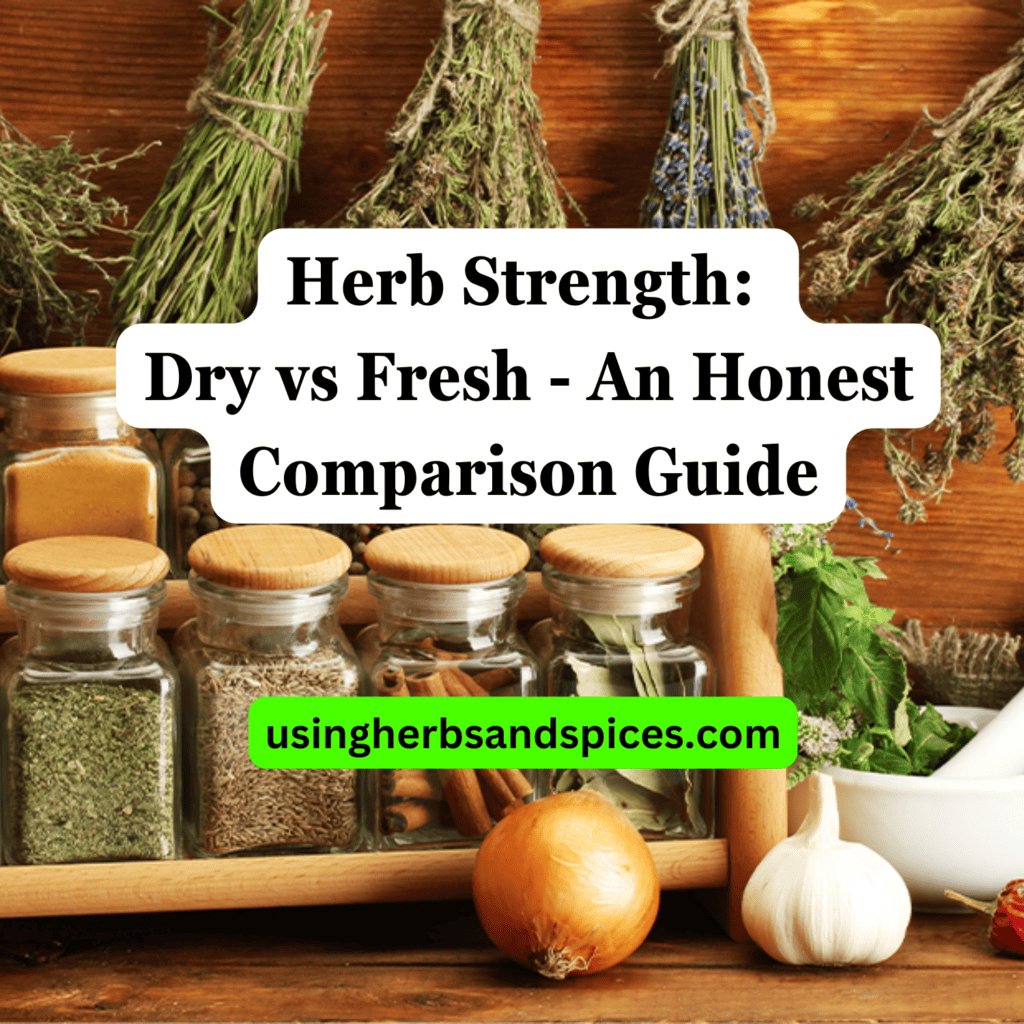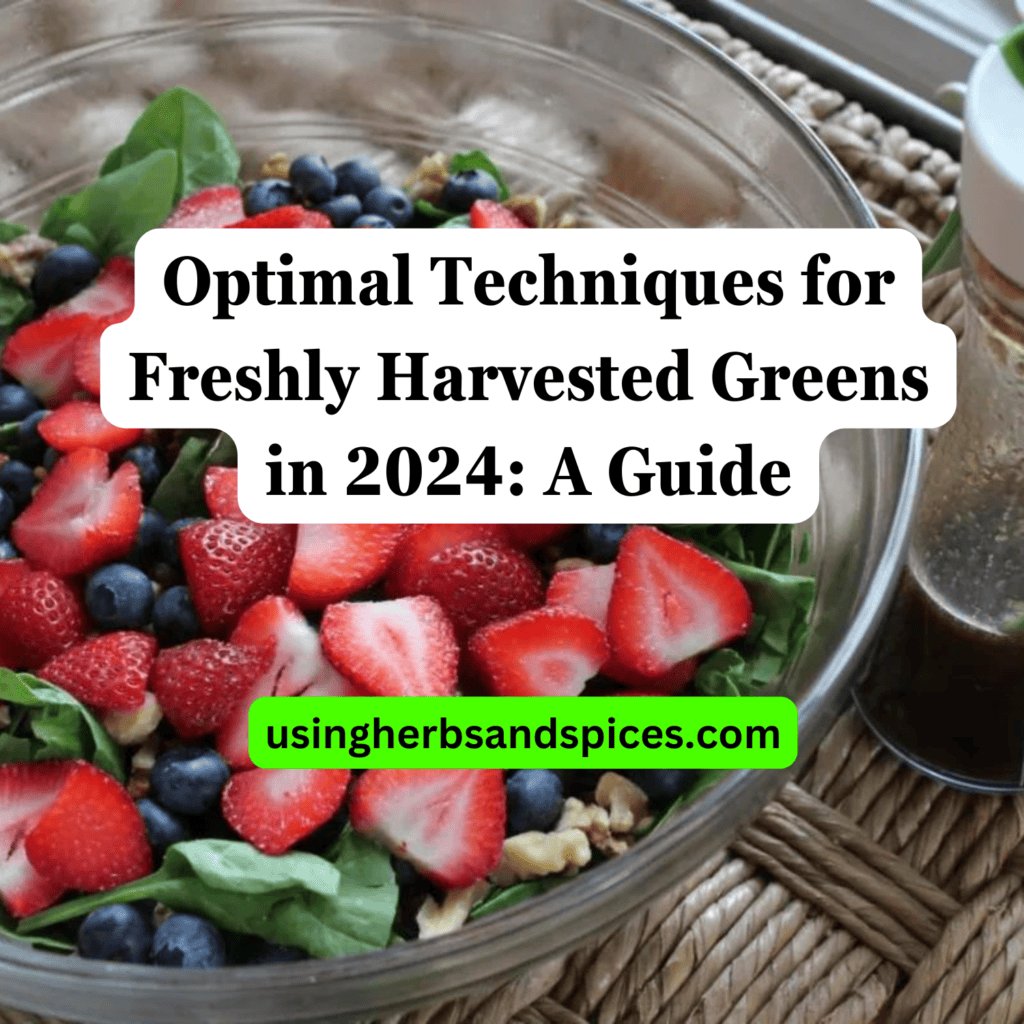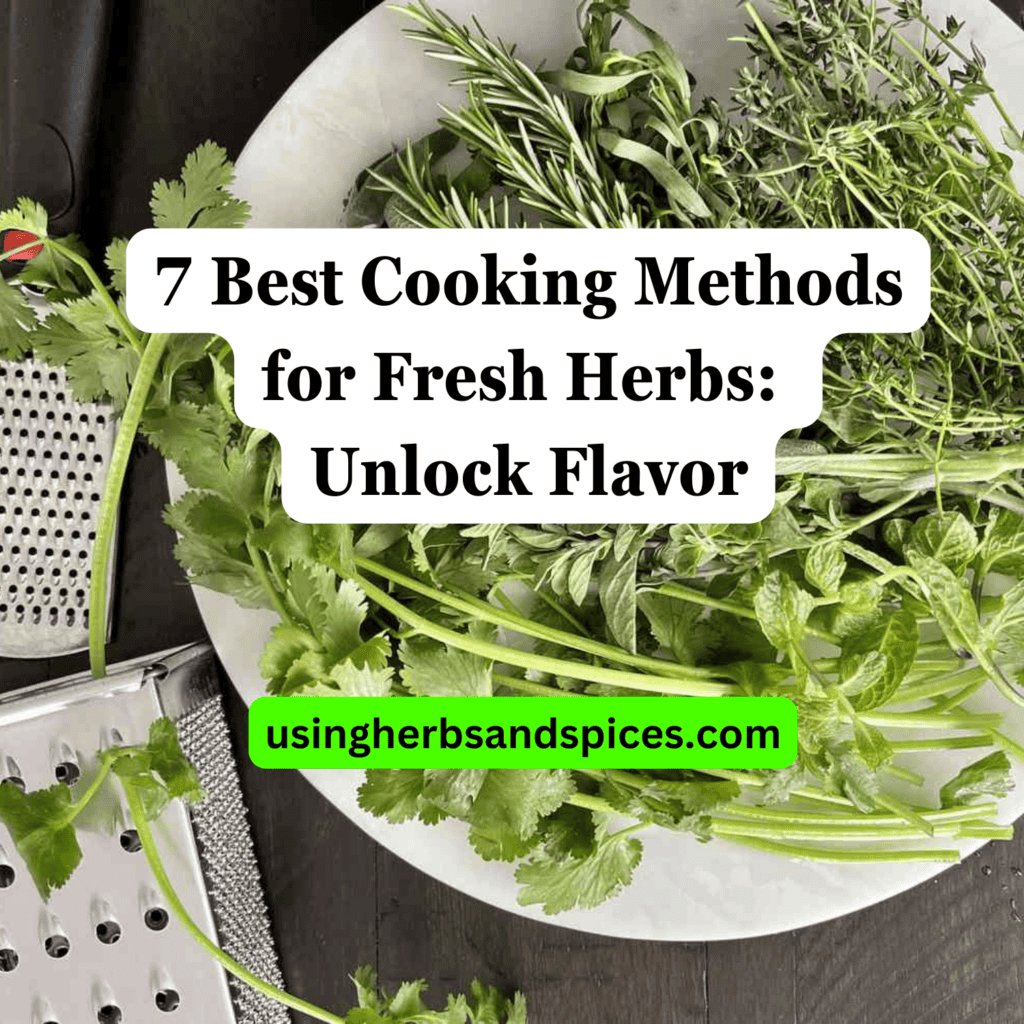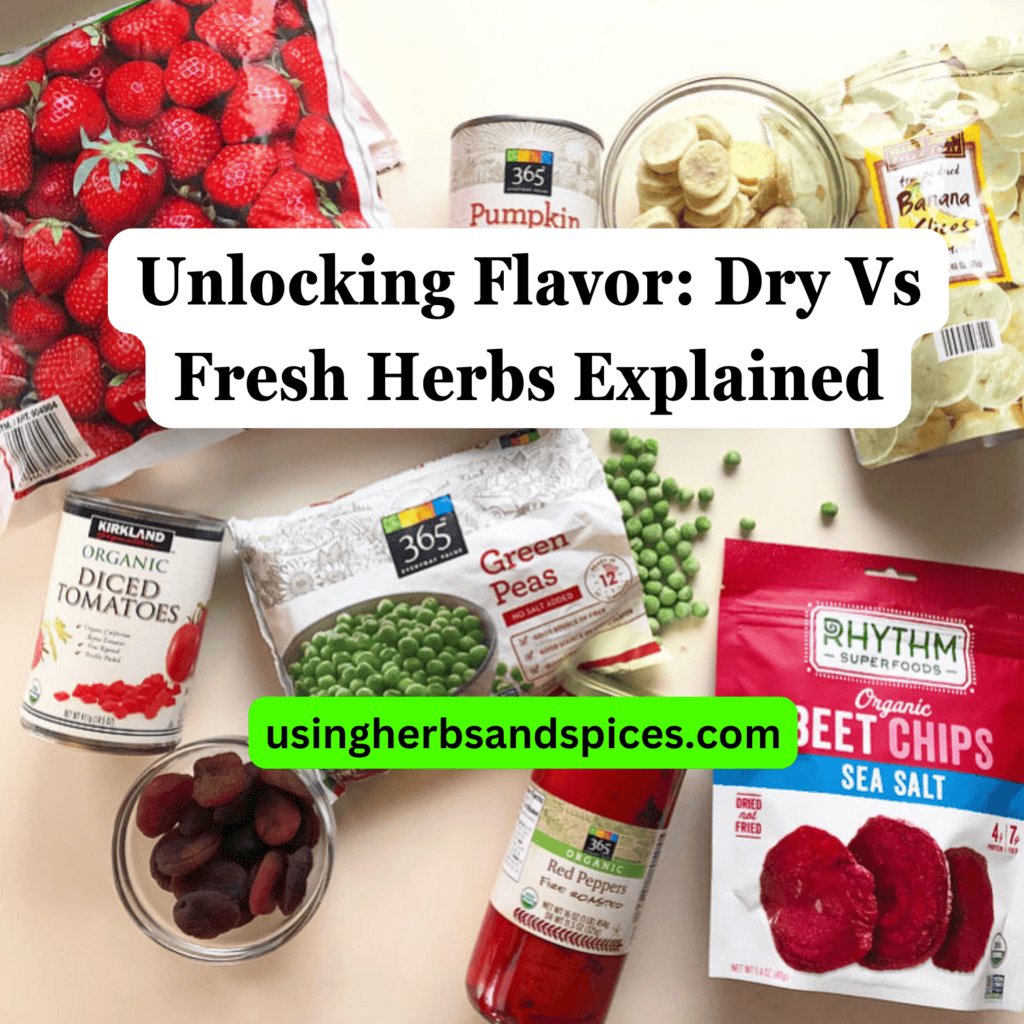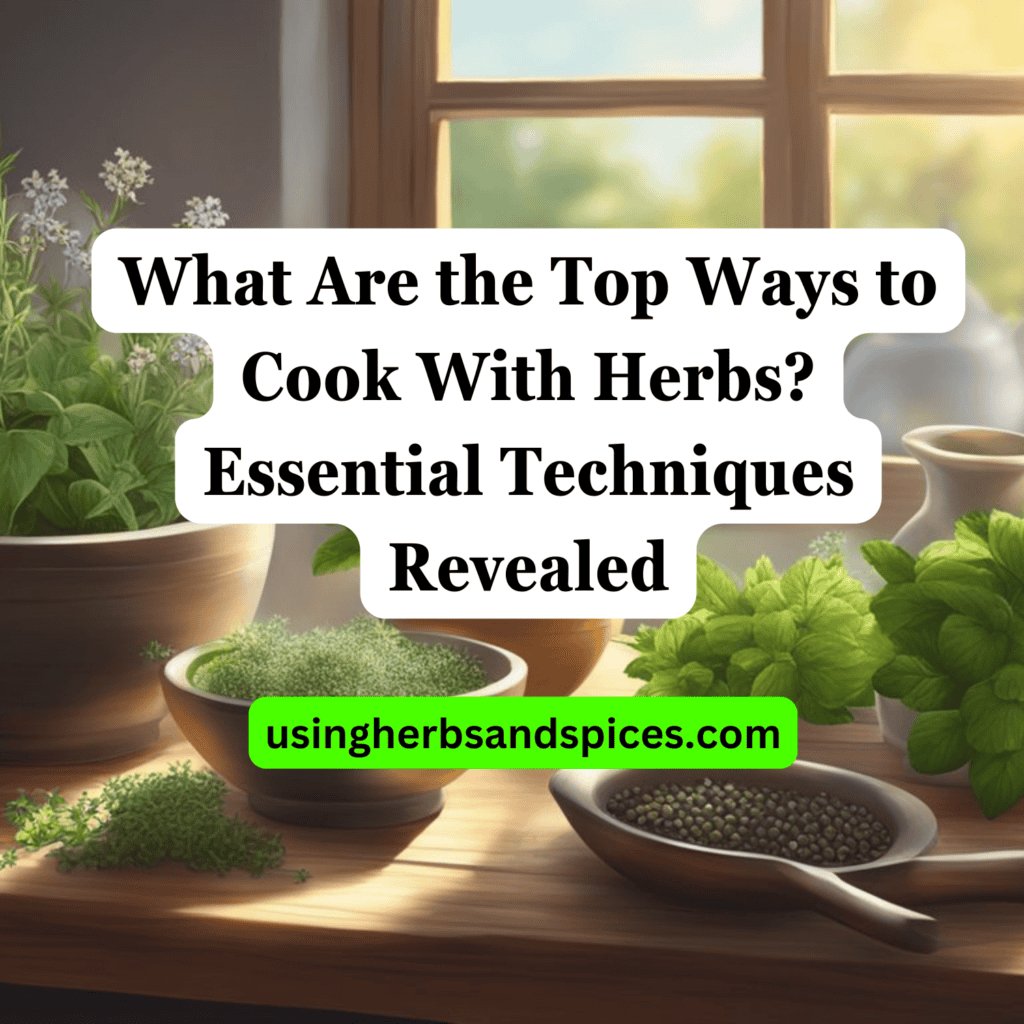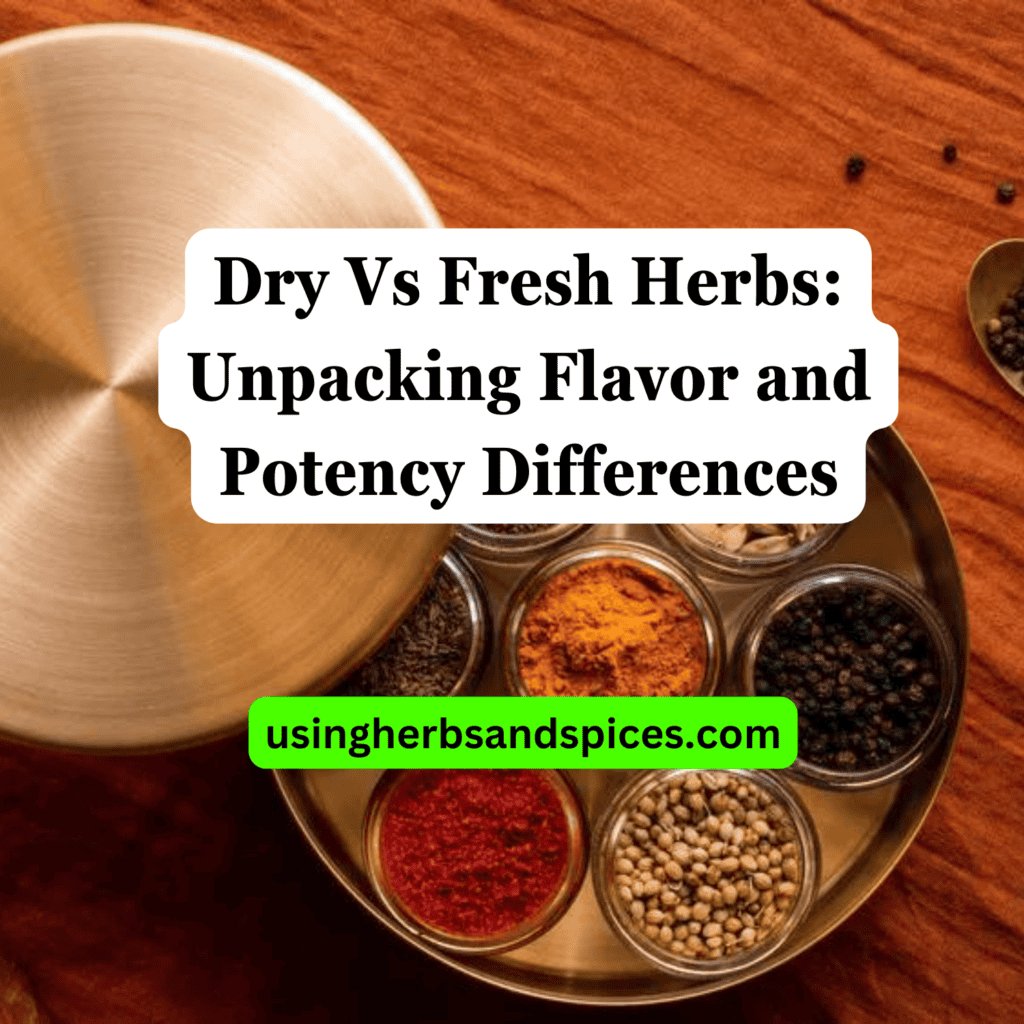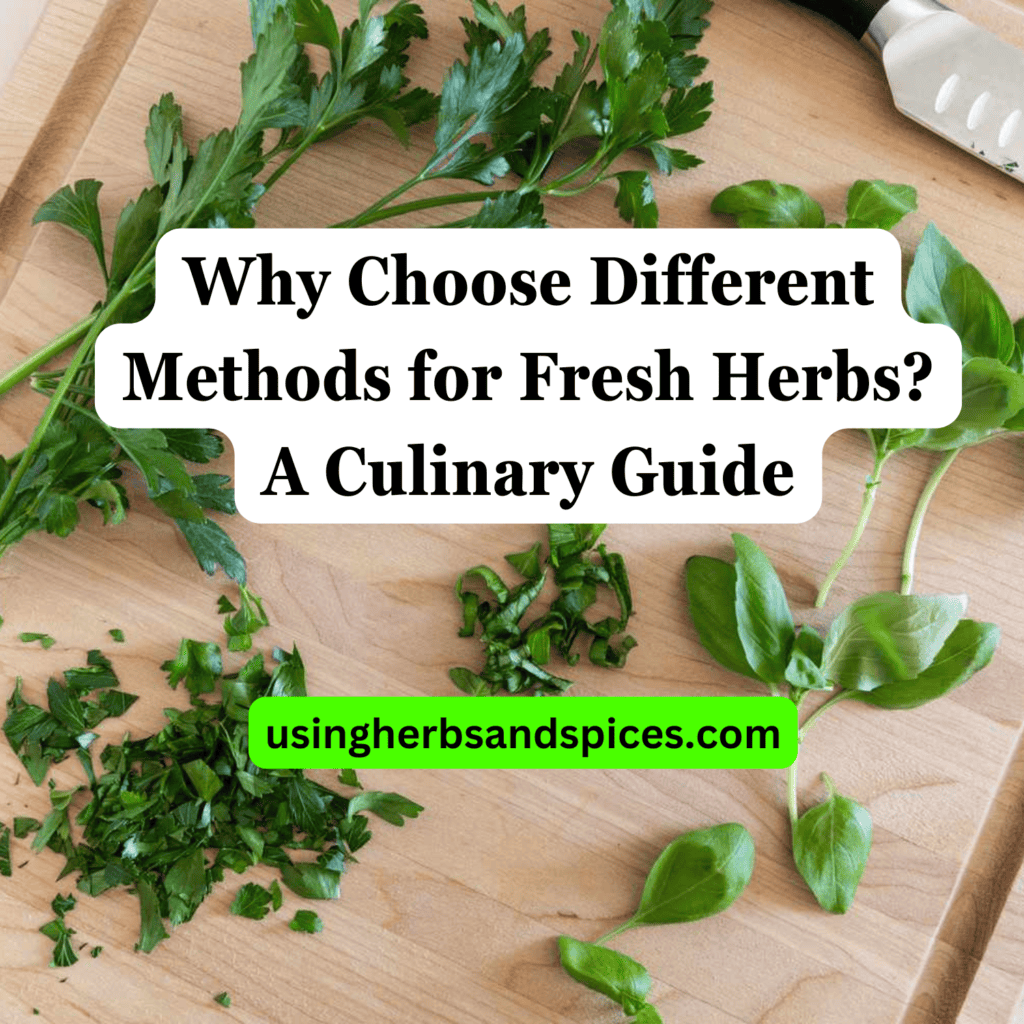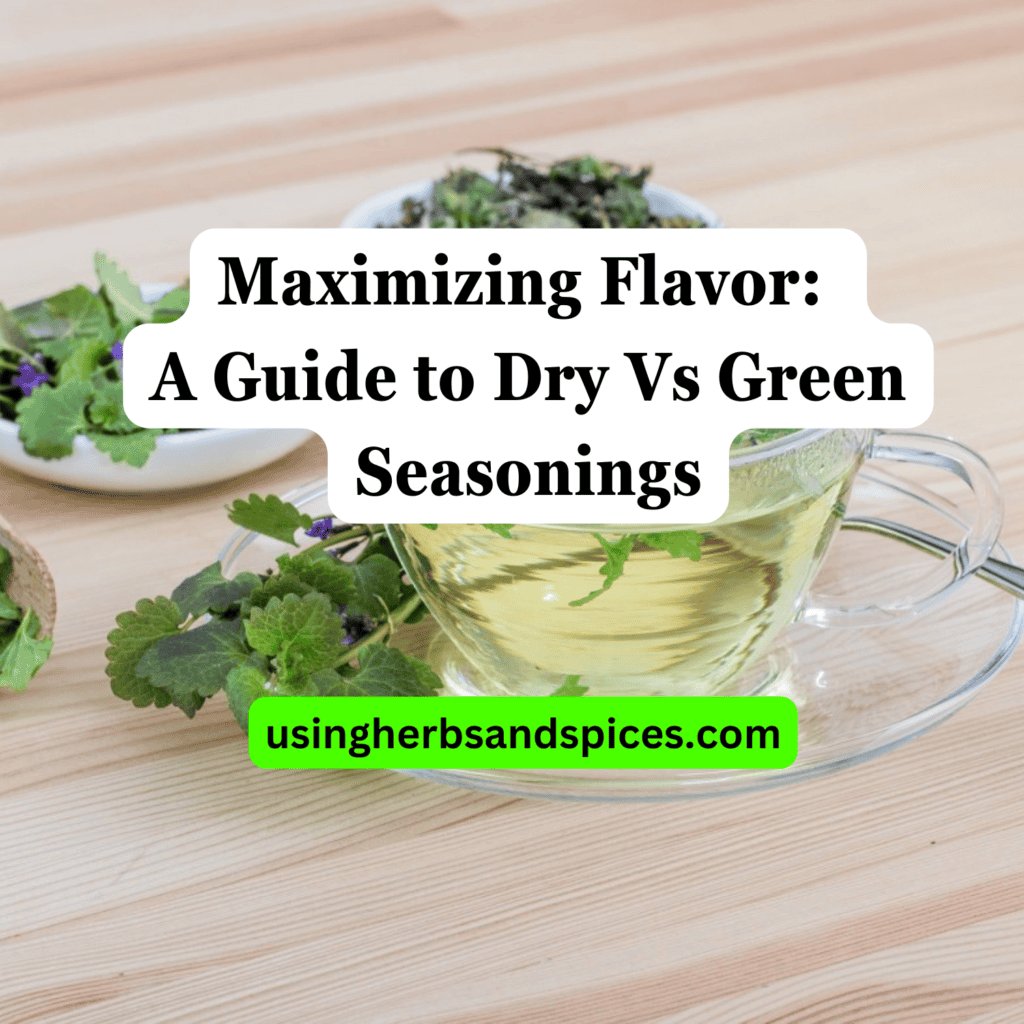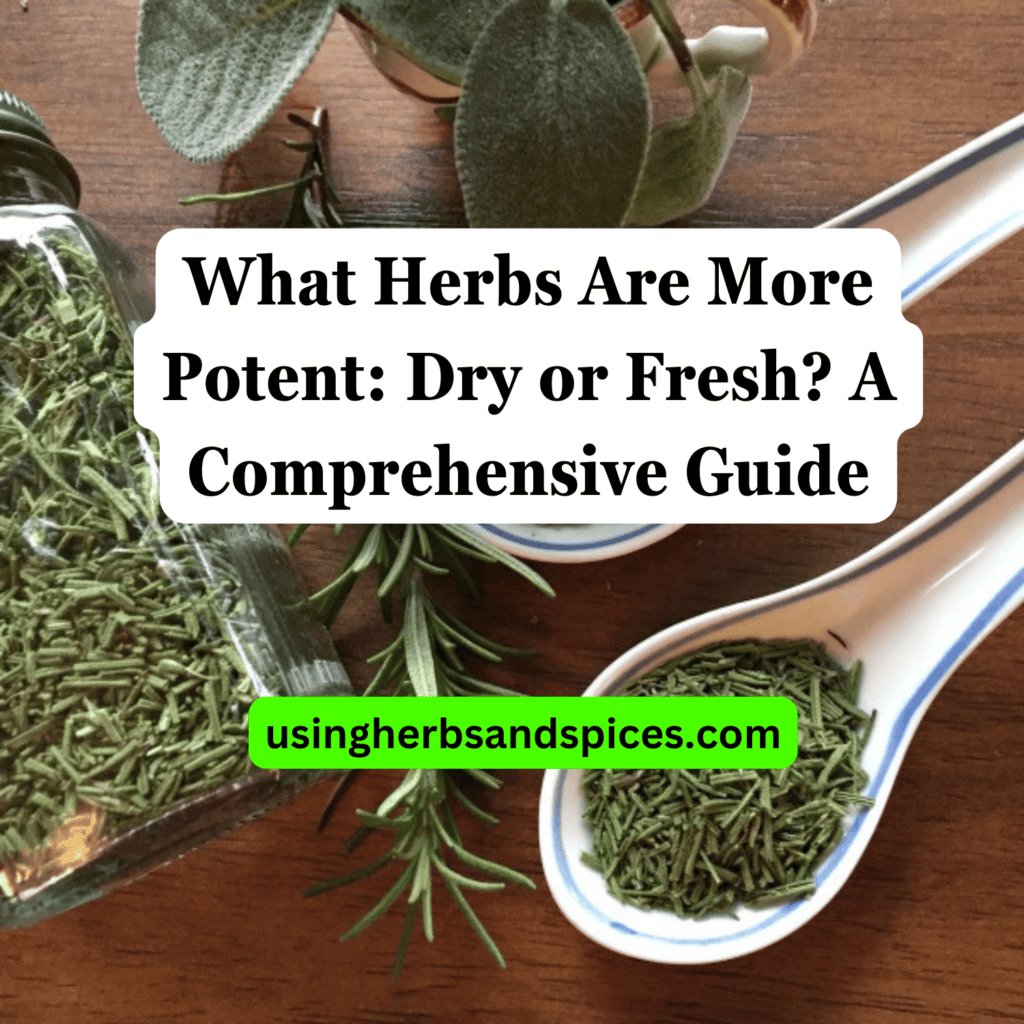SUMMARY: Use fresh herbs to add vibrant color and aroma to your dishes, best added towards the end of cooking. Dry herbs offer concentrated flavors, perfect for longer cooking times to fully infuse into dishes.
Struggling to make your meals burst with flavor using herbs?
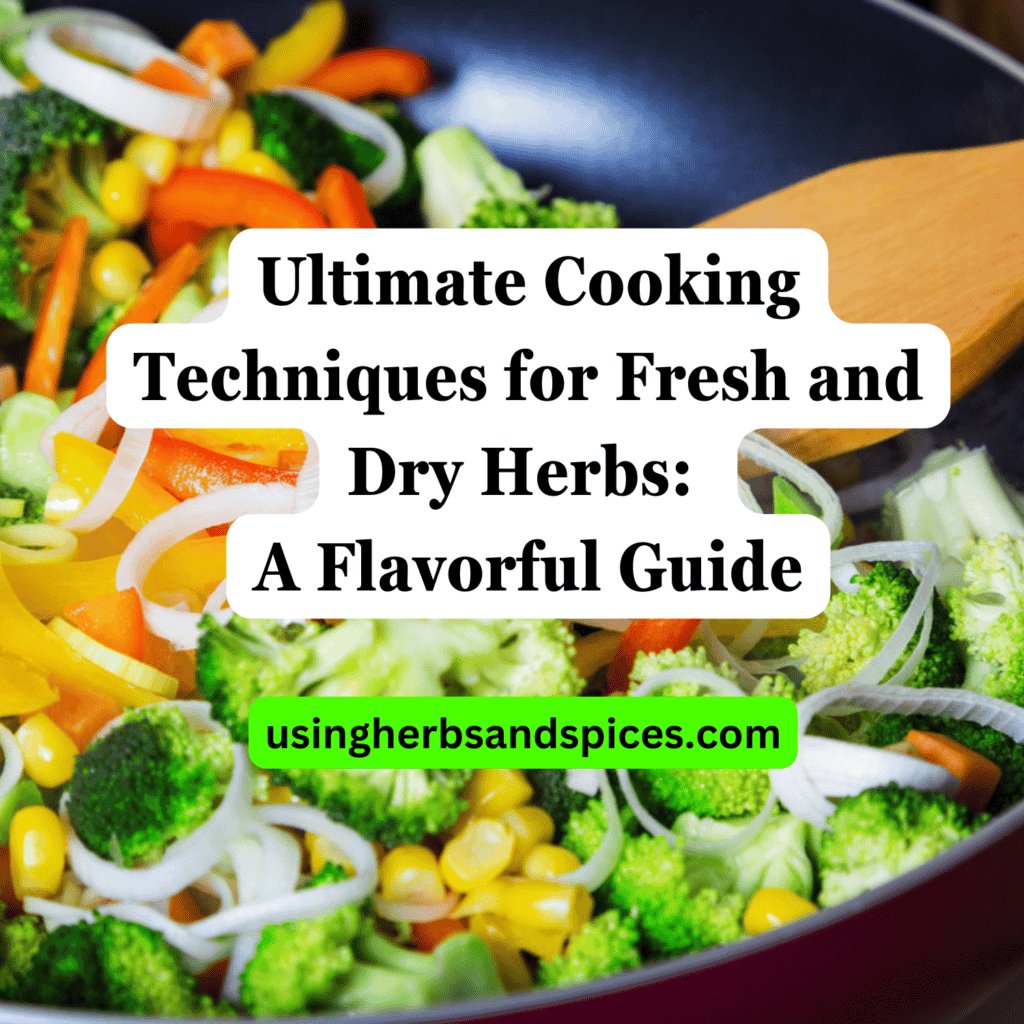
Whether fresh or dry, herbs possess the power to transform any dish from ordinary to extraordinary.
- Deciding between fresh and dry herbs for different culinary applications
- Essential tips for incorporating fresh herbs into your cooking
- How to unlock the potent flavors of dry herbs
- Advanced techniques for mixing herbs to achieve the perfect blend
Continue reading to discover how to leverage the magic of herbs in your cooking, ensuring every meal is a flavorful delight.
Identifying When to Use Fresh vs. Dry Herbs
Understanding the distinction between fresh and dry herbs is crucial in maximizing their flavor potential in your cooking. While both forms can be incredibly versatile, they each shine best in different scenarios.
Fresh herbs, with their vibrant colors and lively aromas, are ideal for adding a burst of freshness to any dish. They work exceptionally well in salads, as garnishes, and in cooked dishes where their color and fresh taste can be preserved. Think of using basil in a fresh tomato salad or cilantro in a zesty salsa.
On the other hand, dry herbs, being more concentrated and robust, are perfect for dishes that cook for longer periods. They withstand the cooking process well and infuse dishes with a depth of flavor that fresh herbs can’t always provide. Dried oregano in a slow-cooked tomato sauce or dry thyme in a hearty stew are prime examples of how dry herbs can enhance a dish.
A key to success in using herbs is knowing that dry herbs should be added early in the cooking process, allowing their flavors to meld with the dish. Fresh herbs, apart from those with hardier leaves like rosemary, should generally be added towards the end of cooking to preserve their flavor and color.
Incorporating Fresh Herbs into Cooking
Successfully integrating fresh herbs into your cooking not only amplifies the flavor profile of your dishes but also infuses them with a burst of color and aroma. To leverage their full potential, follow these expert guidelines:
- Optimal Timing: Add delicate herbs like parsley, cilantro, basil, and dill towards the end of the cooking process. This preserves their color and ensures their flavors remain vibrant and not overpowered by heat.
- Preparation: Rinse fresh herbs under cold water to remove any dirt or residue. Pat them dry gently with a paper towel before chopping. To maximize the flavor, chop herbs just before using them, as this releases their natural oils.
- Chopping Techniques: Use a sharp knife to finely chop or mince the herbs, being careful not to bruise them, which can lead to loss of flavor. For herbs with sturdier leaves, such as rosemary or thyme, stripping the leaves from the stems before chopping or adding whole sprigs during cooking can impart subtle flavors.
- Pairing: Understanding herb pairings can elevate your dishes significantly. For instance, basil pairs wonderfully with tomato-based dishes, while rosemary complements meat like chicken and lamb elegantly. Experimenting with different combinations will help you discover the unique characters herbs can bring to your meals.
Embracing these techniques will ensure that the fresh herbs you incorporate into your cooking will deliver the maximum impact, enhancing both the taste and aesthetic appeal of your culinary creations.
Mastering the Use of Dry Herbs
Best practices for utilizing dry herbs, focusing on how to rehydrate them if necessary and integrating them into dishes for concentrated flavors. When cooking with dry herbs, it’s essential to add them at the correct moment to fully unleash their full aromatic potential. Start by crushing the herbs between your fingers before adding them to the dish; this simple action helps release their essential oils, amplifying their flavor.
For soups, stews, and sauces, integrate dry herbs early in the cooking process. This method allows the herbs to simmer, gradually infusing the dish with a depth of flavor. Conversely, in quicker cooking recipes or dishes with delicate textures, consider adding a small amount of water to rehydrate the herbs before mixing them in. This step ensures that the herbs distribute more evenly, preventing any gritty texture.
Remember, when substituting dry for fresh herbs, the general rule is 1:3, as dry herbs possess a more concentrated flavor. However, the potency of dry herbs diminishes over time, so always taste and adjust as necessary. Store your dry herbs in a cool, dark place, away from direct sunlight and heat, to preserve their quality and extend their shelf life.
Advanced Techniques: Blending Herbs for Ultimate Flavor
The art of combining herbs, whether fresh, dry, or a mix of both, can elevate a dish from good to gourmet. Crafting the perfect herb blend starts with understanding the flavor profile of each herb and how they complement each other. For instance, rosemary and thyme can bring a woodsy essence to meat dishes, while basil and oregano can impart a classic Italian flair to pastas and sauces.
When creating your blend, start with small quantities to test the combinations, adjusting according to taste. For fresh herbs, consider using a mortar and pestle to gently bruise the leaves, releasing their essential oils without pulverizing them. This method allows the herbs to meld together, creating a harmonious blend that will infuse your dishes with nuanced flavors.
For dry blends, gently toast the herbs in a dry pan over low heat before mixing. This step awakens the oils within the herbs, revitalizing their aroma and taste. Once your blend is ready, store it in an airtight container away from light and heat. Label your creation with the date, and use it within three to six months for the best flavor. Experimenting with herb blends not only adds a personal touch to your cooking but also unlocks a world of flavors waiting to be discovered.
Elevate Your Cooking with Fresh and Dry Techniques
In this comprehensive guide, we’ve journeyed through the vital techniques and considerations that articulate the full potential of both fresh and dry herbs in cooking, marking the essential steps towards culinary excellence.
- The pivotal role of choosing between fresh and dry herbs, based on the nature of the dish and desired flavor intensity.
- Effective methods for incorporating fresh herbs to capture their lively essence, preserving their color, and enhancing their aromatic contribution to dishes.
- Mastering the use of dry herbs, including tips for rehydration and how best to weave their concentrated flavors into your cooking.
- Blending herbs, an advanced technique, to unlock and harmonize complex flavor profiles, elevating simple dishes to signature creations.
Embracing these ultimate cooking techniques for using fresh and dry herbs not only bolsters your culinary repertoire but also invites a more nuanced appreciation of flavors, transforming everyday meals into remarkable culinary experiences. With knowledge and confidence, you can now navigate the aromatic world of herbs, enriching your cooking with depth, flair, and distinction.
Ultimate Cooking Techniques for Fresh and Dry Herbs FAQs
Can I use fresh herbs instead of dry herbs in all recipes?
While many recipes specify whether fresh or dry herbs are preferred, it’s generally possible to substitute one for the other. However, because fresh herbs are less concentrated than dry herbs, the substitution will need to account for this difference in potency. The typical ratio is 3:1, meaning you would use three times the amount of fresh herbs as dry herbs.
How long can I store fresh herbs, and what’s the best method?
Fresh herbs can typically be stored for up to a week, depending on the herb and how it’s stored. The best method for storing fresh herbs involves either placing their stems in a glass of water in the refrigerator, much like a bouquet of flowers, or wrapping them in a damp paper towel and then placing them in a resealable plastic bag in the fridge. This maintains their moisture and freshness for a longer period.
Do dry herbs expire? How can I tell if they’re still good to use?
Dry herbs do not expire in the sense that they become unsafe to eat, but they do lose their potency over time. The general guideline for dry herbs is that they are most potent within the first year. You can tell if they’re still good to use if they retain their color and have a distinct aroma when rubbed or crushed. If they smell weak and have faded in color, it’s likely time to replace them.
Is there a difference in flavor between using fresh and dry herbs?
Yes, there is a discernible difference in flavor between fresh and dry herbs. Fresh herbs tend to offer a brighter, more vibrant flavor profile, while dry herbs provide a more concentrated, robust taste. The choice between using fresh or dry often depends on the cooking process and the desired flavor outcome of the dish.

